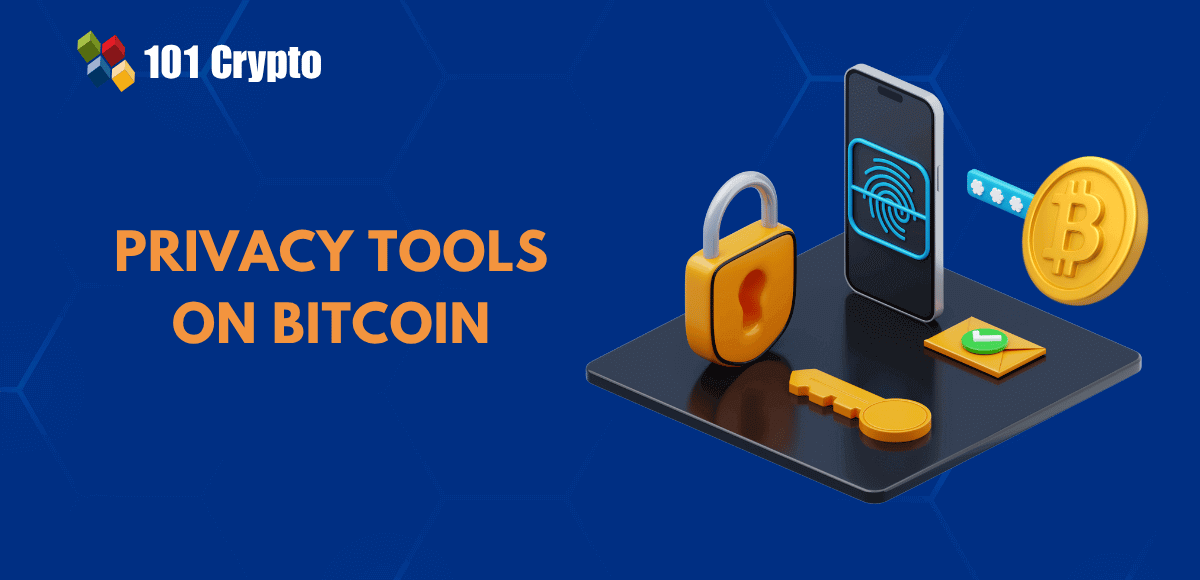Many people must have heard about Bitcoin and its exponential price growth. Would you have imagined that an asset which is worth more than $110,000 was used to buy pizzas? Upon its arrival, Bitcoin did not become an overnight sensation. On the contrary, it went through different cycles of dips and elevations to reach the stage it is at today.
The demand for courses on Bitcoin for beginners has been increasing consistently as more people want to explore the crypto space. Why has Bitcoin become such a huge phenomenon? Let us learn more about the fundamentals of Bitcoin to understand how it works and why it is a popular cryptocurrency.
Enroll now in the Bitcoin Fundamentals Free Course to gain deep insights on how the Bitcoin blockchain works.
Unraveling the Identity of the First Cryptocurrency
The best way to start an introduction to Bitcoin involves learning about its identity as the first cryptocurrency. Bitcoin created disruption in the domain of finance by providing decentralized electronic cash system which supports peer-to-peer transactions. If you look closely, Bitcoin created the foundation of the crypto market. Bitcoin showed that the world can have digital currencies that are not under the control of governments or banks.
Some of you might assume that Bitcoin is a concept that only a few experts can understand. On the contrary, you can find the answer to ‘How can a beginner start Bitcoin?’ with the help of guides that don’t rely on jargon. Beginners can understand the fundamentals of Bitcoin better with the following sections.
-
The Genesis Block
The first step for a beginner interested in learning about Bitcoin involves learning about its origins. You must know that Bitcoin arrived in the world during one of the world’s worst financial crises in 2008. An anonymous author, Satoshi Nakamoto, published a whitepaper with the title ‘Bitcoin: A Peer-to-Peer Electronic Cash System’ and changed the definition of finance. The groundbreaking whitepaper showcased the concept of a decentralized virtual currency, which is completely free from influence of central authorities.
The Bitcoin network became active in January 2009 with the successful mining of the first block or the ‘genesis block’. One of the interesting things about Bitcoin as first cryptocurrency of the world is the anonymity of its creator. No one has been able to unravel the identity of Satoshi Nakamoto till now, making it one of the biggest mysteries of the world of cryptocurrencies.
-
Core Principle of Bitcoin
You might have some questions about the relevance of introducing Bitcoin during a global financial crisis. Did it solve the crisis? Bitcoin introduced the concept of decentralization in practice, which empowers it to serve as a peer-to-peer digital cash system. You can understand the significance of decentralization with a review of how traditional financial systems operate.
Banks and governments control transactions, maintain ledgers and issue currencies, thereby placing them in a position of power. The decisions of these intermediaries led to the 2008 financial crisis, leading millions of people into financial uncertainty.
Bitcoin does not have a central administrator, bank or point of control. On the contrary, Bitcoin runs on the efforts of a global network of nodes and miners, who voluntarily invest computing resources for verifying and recording transactions. The decentralization of Bitcoin provides the assurance of enhanced security, transparency and resistance to censorship.
-
The Immutable Ledger
The most powerful component of the Bitcoin cryptocurrency is the Bitcoin ledger or blockchain. Bitcoin also introduced a revolutionary technology, Bitcoin, which offers a public, distributed and immutable ledger. The ledger is similar to a digital notebook in which every page is a block of transactions. Once one page is filled and the content is verified to be authentic, the page will be added permanently to the notebook. Each verified page or block has cryptographic links to the previous page or block, thereby creating a chain of blocks.
Every Bitcoin transaction is recorded on the immutable ledger. The advantage of decentralization ensures that the details of each transaction are distributed throughout thousands of computers worldwide. As a result, no one can alter or manipulate Bitcoin transactions without other network participants noticing. On top of it, immutability requires modification to every subsequent block on every node in the network to alter old transactions. Therefore, the ledger plays a crucial role in improving the trustworthiness of Bitcoin.
Working Mechanism of Bitcoin Transactions
The fundamental blocks of Bitcoin provide a glimpse of how the network functions. You might have some queries about the working of Bitcoin transactions. Anyone who wishes to learn Bitcoin must know the lifecycle of typical Bitcoin transactions. The following steps will show how a Bitcoin transaction becomes a part of the ledger.
The first step in any Bitcoin transaction is the initiation, where users create a transaction request. Let us assume that you make the transaction request to send Bitcoin to someone through a Bitcoin wallet.
The wallet will ask for your private key to sign the transaction. It is similar to using your PIN for withdrawing funds from an ATM and preventing anyone else from spending your money.
The actual lifecycle of a Bitcoin transaction starts when it is broadcast across the network for verification. Bitcoin miners pick up the transaction and check the legitimacy by using advanced computing rigs to solve complex mathematical problems. The verification process checks whether you have the funds required for the transaction and also verifies your digital signature.
After successful verification, the transaction will be added to a new block with other pending transactions. The miner who verifies and adds a new block to the existing ledger will receive newly minted Bitcoin and a share of transaction fees. Upon adding a transaction in a block and including the block in the blockchain, the transaction will receive ‘confirmations’ with more blocks being added on top of it.
Discovering the Powerhouse of the Bitcoin Network
The role of miners is an integral aspect in the working of Bitcoin. You will not find any guide on Bitcoin for beginners, which does not focus on Bitcoin mining. Bitcoin mining helps in introducing or minting new Bitcoin tokens into circulation by verifying and adding transactions to the ledger. The mining process is extremely competitive and involves miners using specialized hardware to come up with answers to complex cryptographic puzzles.
The first one to solve the puzzle will get the privilege of adding the next block to the ledger. One of the prominent reasons for growing competition in Bitcoin mining is the reward for successful miners. Upon adding a block after solving the cryptographic puzzle, miners receive a certain amount of new Bitcoin tokens and share of transaction fees.
The reward for Bitcoin mining is halved in almost every four years, thereby increasing scarcity of Bitcoin. Mining serves a massive role in ensuring the integrity and security of Bitcoin network. As a matter of fact, it offers an appealing incentive for participants to safeguard the network and introduce new Bitcoin in a controlled manner.
Value and Volatility of Bitcoin
Another crucial aspect of Bitcoin that no one can ignore is the value of Bitcoin, which has been growing exponentially. The value of Bitcoin, just like any other asset, depends on the demand and supply. One of the interesting highlights of Bitcoin as first cryptocurrency is the fixed supply. Bitcoin has a limited supply, which means that there could only be a total of 21 million Bitcoin tokens ever in this world. On the other hand, the demand for Bitcoin has been increasing, as evident in the increasing adoption rates, which have contributed to substantial price growth.
You should also acknowledge the notorious volatility of Bitcoin. The historic price patterns of Bitcoin have shown how its price can fluctuate dramatically in short periods. Apart from demand for Bitcoin, you will also find many other factors influencing the price of Bitcoin. For instance, the introduction of new regulations or government crackdowns can affect Bitcoin adoption, thereby impacting its price. Some of the other factors that affect Bitcoin price include macroeconomic factors and technological advancements in the Bitcoin network.
Understanding the Benefits and Limitations of Bitcoin
Bitcoin has not only provided the world its first cryptocurrency but also created a new definition for digital currencies. As a matter of fact, Bitcoin has led to a paradigm shift in the fundamental approaches for perceiving and interacting with money. Most of the answers for “How can a beginner start Bitcoin?” would also focus on learning the benefits and limitations to obtain a balanced perspective on Bitcoin.
Bitcoin provides the advantages of decentralization, immutability, transparency, cryptographic security and censorship resistance. It also offers enhanced global accessibility and lower transaction fees, especially for international transactions. Most important of all, Bitcoin establishes the foundation for innovation in finance that may open new doors to financial inclusion. However, Bitcoin has to face some limitations such as extreme price volatility, regulatory uncertainty and concerns regarding its environmental impact.
Final Thoughts
The introduction to Bitcoin revealed how decentralization serves as its core principle, mining works as the powerhouse and the immutable ledger providing a solid infrastructure. Bitcoin has emerged as one of the beacons of innovation in finance by providing completely decentralized electronic cash system. As the Bitcoin blockchain becomes more mature, it will create new opportunities for growth. At the same time, a balanced perspective on Bitcoin is essential to make the most of its potential. Learn more about the fundamentals of Bitcoin from the viewpoint of an expert right now.
Disclaimer
The article should not be taken as, and is not intended to provide any investment advice. Claims made in this article do not constitute investment advice and should not be taken as such. 101 Crypto shall not be responsible for any loss sustained by any person who relies on this article. Do your own research!







